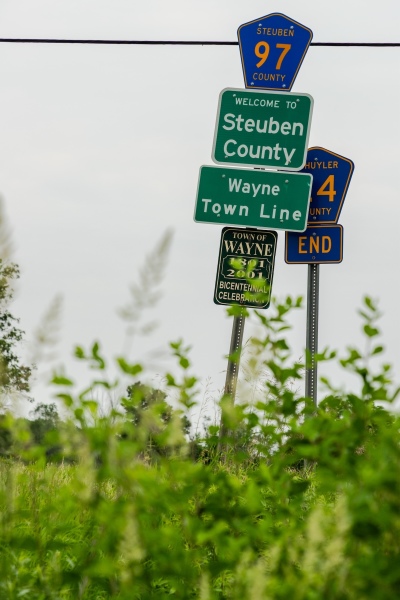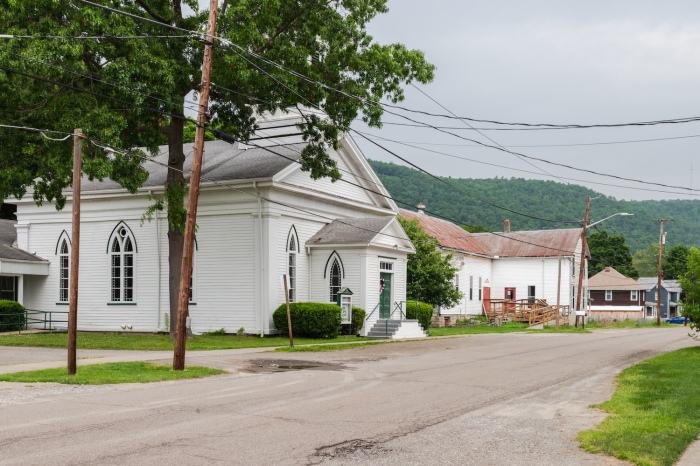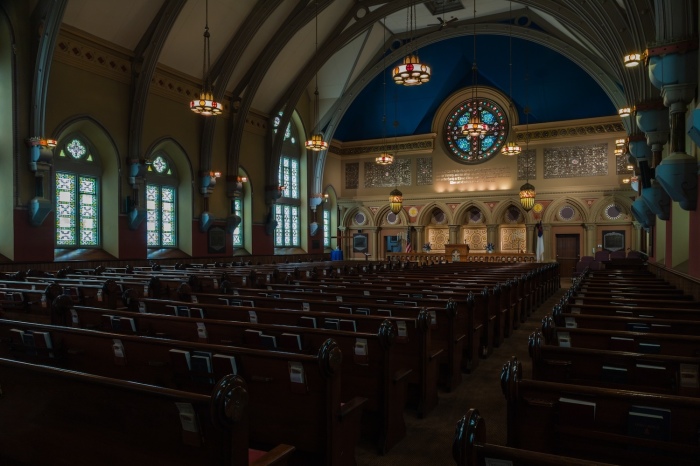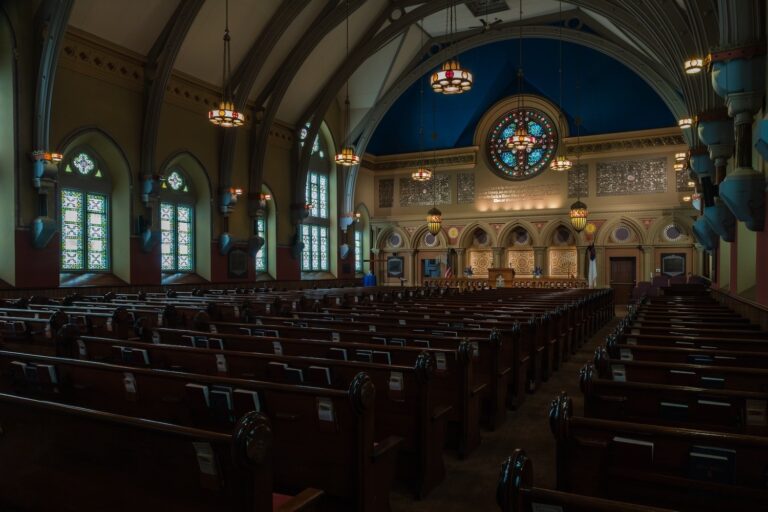Steuben County is a world that has been excluded from the way most people think about New York.
Located in southwest New York, Interstate 86, halfway between Cleveland and New York City, divides the county. That’s going to be relatively simple here.
The big draw in Steuben County has always been Lake Keuca. Formed by glaciers, this is one of 11 lakes in western and central New York that make up Finger Lake. The name comes from the long, narrow shape of the finger. At about 20 miles long, Keuka is the third largest of the lake.

Get the latest news for free
Subscribe to get daily/weekly emails with Top Stories (plus special offers!) from Christian Post. I know first.
The state from Michigan and the state with the license plate declares her a Water Winter Wonderland, but I am not easily impressed by the lake. However, the Keuka is a distinctive Y-shaped shape and is much more picturesque than most of the lake returning home due to the high hills that surround it.
The scenery reminded me of Germany. Germany finds similar terrain along the Rhine and Mosel rivers. Here, the vineyards line the slopes.
Finger Lakes’ grape cultivation is almost nothing new. Whether it’s table grapes or wine and non-alcoholic juice production, the Steuben County vineyards have been growing grapes since 1829 when Anglican Rev. William Bostwick grew the first grape grapes at the monastery of St James’ Church in Hunmondport.

Bostwick, who received soul treatment in fledgling Anglican parishes in several counties, and other early growers used Vigis Labrasca in Native American grapes or Latin. These varieties include Concord, Catawba and Niagara. This is a grape that is often used in juices sold at grocery stores. Recently, most vineyards have switched to Vitis Vinifera, the Latin name of European grapes. One of the most suitable grapes is Riesling, a grape synonymous with German wine.
Given the Finger Lakes wine scene, there are quite a few farms in both Steuben County and the surrounding area. The county is claimed to have more farmland than any other New York county.
Without eating or drinking locally, there is the charm of a small town in dozens of villages and two cities. The only real difference between a village and a city is how state law classifies municipalities. I think most visitors would call the village a town.
It appears that every community has at least two churches. This reflects a time when religious devotion has increased, and largely bygone times when sectarian differences on theological and political issues became more pronounced, especially among Protestants.

One such example is Savona village between Corning, a small, large, tactile city, and Bath, a village that serves double duty as a county seat.
The village’s 670 souls can choose to worship in the 19th century Anglican Church, Good Shepherd Church, and the federal church of the Civil War under the American Baptist Minister. The same is true elsewhere, including Corning.
The three Protestant anchors on the mainline occupies the landmark buildings on West First Street. The Episcopal Church of Christ Church, the Stone Gothic Revival building. Methodist with the Red Brick Richardson Romanesque First United Methodist Church. and the first Presbyterian church in Postbellum, the PCUSA congregation worshipped in the city’s oldest and most continuous use church.
Steuben County’s most notable church is in the seat of the county, established in 1793 in one of the first waves of the Western expansion following the American Revolution.
Many churches across the country have glass attributed to Louis Comfort Tiffany or his studio, but Bath’s first Presbyterian church is one of the few that have interiors designed by Tiffany. As I explained in a column last December, his family Tiffany & Company still exists as a gorgeous jeweller today – he worked at the turn of the last century when churches across the denomination had money to build better architecture and more energetic inner churches.

The first Presbyterian should also be notable for his Venetian Gothic designs by Jacob Way Maldie, an English-American architect who is not known for his work in the church, but the redesign of Tiffany’s interior, funded by a wealth of guardians, has attracted attention.
Helen Brink, a 95-year-old church attendee of a congregation, tour guide and any one-woman band for all history in Steuben County, told me that most locals have forgotten the importance of the church’s decorative arts. As cool kids today say, if you know, you know.
Facing the public square to the north, you walk through the main entrance, which is the catty corner of the county courthouse, and pass through the naval area, before entering the nave. After that, all eyes focus on the southern tip. Here, the Biblical Biblical Railway and a modest table (not an altar in Presbyterian terminology) standing in front of the pulpit is made from carved mahogany. Other Tiffany objects include rose windows above the Prime Minister, gas-turned electric lamps in the shape of an acorns, and relatively modest glass windows lined up on the east and west walls.
For me, the biggest surprise was the grandeur of the first Presbyterians. After all, this is a church of a reformed tradition. Decorative details are not out of place in the Anglican church of the era, and certainly not in the Roman Catholic Church. However, in such cases the geometric patterns Tiffany used would have instead portrayed figurative scenes of saints and biblical Scripture.
If you’re going
Corning, home to the Fortune 500 company of the same name, surpasses its weight due to the two museums. The Corning Museum of Glass combines over 50,000 objects from the 3,500-year history of glass. Meanwhile, the Rockwell Museum, belonging to the Smithsonian at Richardson Romanesque’s former city hall, features a small but notable collection of American art, from Hudson River School to Old West’s works, featuring Frederick Remington and Charles Russell.
Bath’s first Presbyterian Church also offers free tours from 10am to 1pm on Wednesdays in July and August, from 10am to 1pm on Sundays. Unfortunately, most other historic churches in Steuben County are closed mostly outside of regular worship services.
I stayed about 30 miles (and 30 minutes) from Lake Keuca at Corning at Hilton Garden Inn. Some rooms on the upper floors have a troublesome premium view of the Kemun River. The Gaffer district, which covers Market Street, all Corning’s main street except the name, is stepping into the area within five minutes.
For those closer to the lake, base Hammond Sports. Park Inn is an old fashioned inn with just five rooms and a farm-to-table restaurant, making it the best option. If not available, book Hammondsport Hotel Best Western Plus.
Recommended restaurants include Corning’s cellar, the perfect harbor at Lake Keuca, and the tavern in the village of Hammond Sports. Dr. Konstantin Frank Winery is a celebrity named after the winery. Another solid option is Weiss Vineyards. For something a little more approachable, there’s something about the bully’s vineyard for everyone.
Steuben County is less than five hours’ drive from major cities in Pittsburgh, Philadelphia, Washington, Toronto and New York City. Elmira Corning Regional Airport, located in nearby Kemun County, is the closest airport with airline services, but airfares are slightly higher and flights are limited. The Rochester airport is 100 miles or 90 minutes away, with more options.
Dennis Lennox is a travel column for Christian Post.
Dennis Lennox writes about travel, politics and religion. He has appeared in the Financial Times, Independent, The Detroit News, Toronto Sun and other publications. Follow @dennislennox on Twitter.
